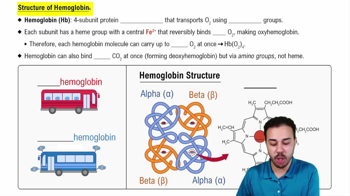Textbook Question
Predict the effects of each of the following on systemic arterial blood pressure:
a. The practice of 'blood doping,' which increases the number of red blood cells in the blood
287
views
 Verified step by step guidance
Verified step by step guidance



Predict the effects of each of the following on systemic arterial blood pressure:
a. The practice of 'blood doping,' which increases the number of red blood cells in the blood
Predict the effects of each of the following on systemic arterial blood pressure:
c. Blood loss from a bleeding ulcer
Which of the following is not a formed element of blood?
a. Erythrocyte
b. Leukocyte
c. Mast cell
d. Platelet
Fill in the blanks: Lymphocytes are derived from the_____cell line, whereas the other leukocytes are derived from the_____cell line.
Explain how blood, being a liquid, enables all its components (formed elements and plasma) to perform their functions.